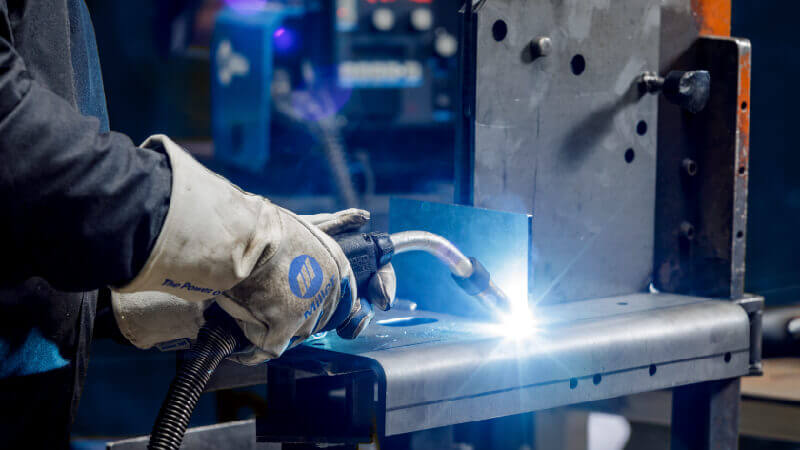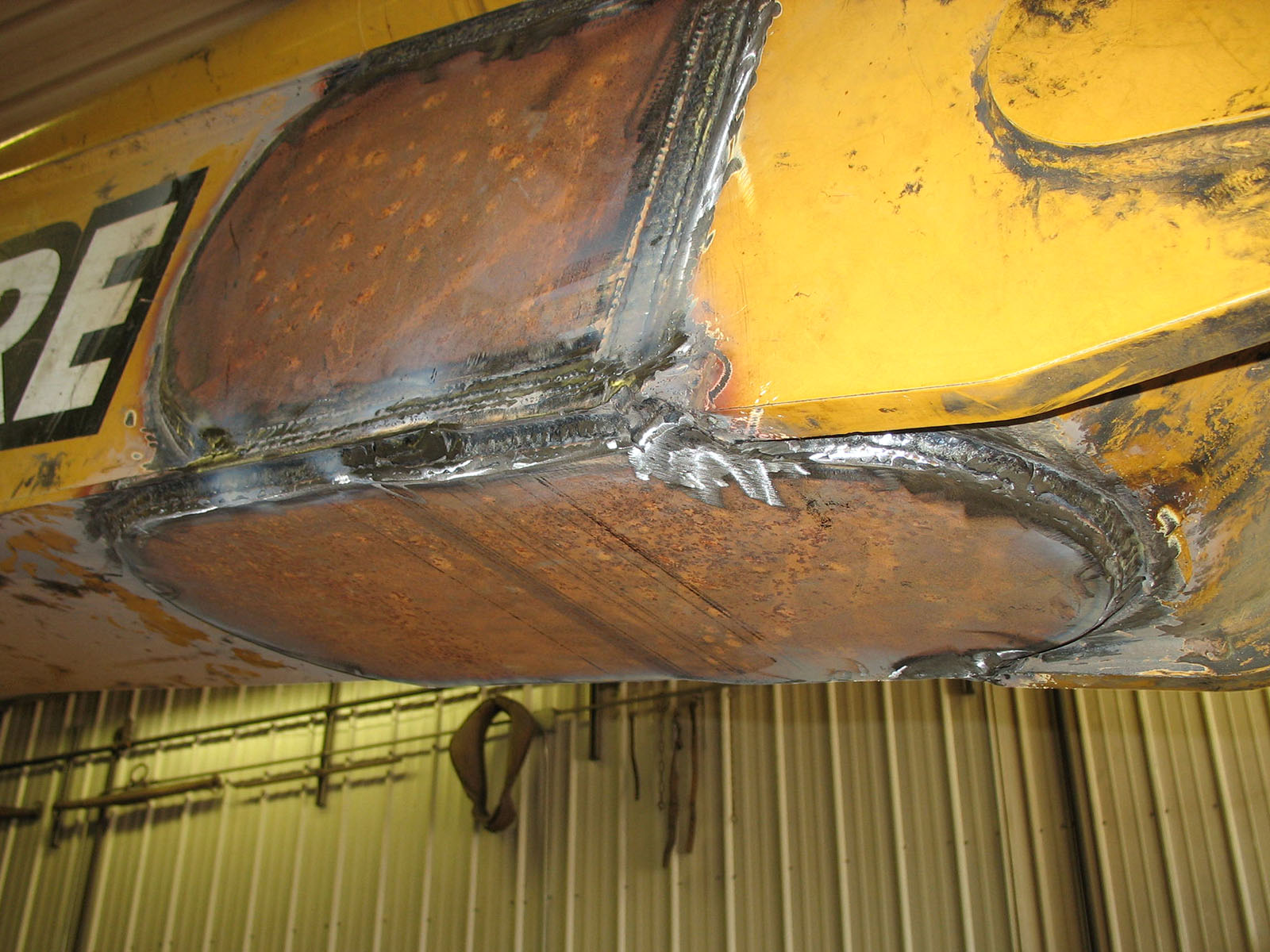Common Welding Repair Work Issues and Just How to Address Them Properly
Welding repair services usually encounter an array of problems that can jeopardize the stability of the end product. Typical issues include insufficient penetration, porosity, and imbalance, among others. Each defect provides unique difficulties that call for certain methods for resolution. Recognizing these concerns is crucial for welders aiming to improve their results and skills. This discussion will certainly explore these usual welding repair service issues and reliable methods to resolve them.
Insufficient Penetration
Insufficient penetration happens when the weld metal stops working to fully fuse with the base material, leading to weak joints and potential structural failings. This concern frequently comes from inadequate heat input, incorrect electrode angle, or improper welding rate. Welders may come across poor penetration due to a miscalculation of the necessary specifications for a specific material thickness or type. Furthermore, contamination on the base product's surface can hinder effective bonding, intensifying the problem. To address insufficient infiltration, welders must guarantee appropriate settings on their devices and maintain a clean job surface. Regular examination of welds is advised to recognize any kind of deficiencies early, enabling for timely improvements and the avoidance of jeopardized architectural stability in bonded settings up.
Porosity
Porosity is an usual problem in welded joints that manifests as tiny gas bubbles entraped within the weld steel. This problem can compromise the integrity of the weld, leading to reduced toughness and prospective failure under tension. Belgrade. Porosity usually emerges from contamination, moisture, or inappropriate welding methods, which enable gases to escape right into the molten weld swimming pool. To attend to porosity, welders must ensure correct surface preparation, preserve a tidy workplace, and make use of ideal welding criteria. In addition, selecting the best filler product and protecting gas can reduce gas entrapment. Routine examination and screening of welds can help recognize porosity early, ensuring timely rehabilitative activities are taken, thereby maintaining the quality and dependability of the bonded structure
Misalignment
Misalignment in welding can arise from different elements, including incorrect arrangement and thermal development. Understanding the origin is necessary for reliable resolution. Several improvement strategies are readily available to straighten components and ensure structural stability.
Reasons for Imbalance
Welding misalignment often originates from a selection of underlying problems that can endanger structural integrity. One primary cause is improper fit-up of components prior to welding, which can result in voids and irregular surfaces. Variations in thermal development throughout the welding procedure can also lead to distortion, specifically if the materials being signed up with have different coefficients of growth. Furthermore, inadequate securing and fixturing might fail to hold parts safely in area, resulting in activity during welding. Badly maintained equipment, consisting of welding equipments and tools, may present disparities in the weld bead, additional adding to misalignment. Driver error, stemming from inadequate training or experience, can additionally play a considerable role in creating misaligned welds.

Correction Strategies Readily Available
Attending to imbalance successfully calls for a mix of rehabilitative techniques customized to the particular concerns at hand. One typical approach is the use of jigs or fixtures to hold elements in the right setting during welding, ensuring consistent positioning. Furthermore, pre-heating the products can assist minimize distortion and improve fit-up. For considerable misalignment, mechanical realignment techniques, such as utilizing hydraulic jacks or clamps, can be utilized to fix the position prior to welding. Post-weld warmth treatment may additionally be needed to ease tensions created by misalignment. Finally, cautious inspection and change during the arrangement phase can protect against misalignment concerns from ending up being considerable troubles, advertising a smoother welding process and enhancing overall architectural honesty.
Distortion
Distortion is an usual obstacle in welding that can occur from different factors, consisting of unequal cooling and heating. Understanding the reasons for distortion is important for implementing reliable avoidance strategies. Addressing this problem not just boosts architectural stability yet also boosts the general top quality of the weld.
Reasons of Distortion
When subjected to the extreme heat of welding, materials commonly go through changes that can result in distortion. This phenomenon mostly emerges from thermal growth and contraction during the welding procedure. As the weld area warms up, the material increases; upon cooling, it gets, which can create inner stress and anxieties. On top of that, uneven home heating throughout a workpiece can worsen these anxieties, causing bending or bending. The sort of material also plays a considerable duty; metals with varying thermal conductivity and coefficients of growth might react differently, bring about uncertain distortions. Additionally, inadequate joint layout and insufficient fixturing can add to misalignment during welding, enhancing the probability of distortion. Recognizing these reasons is necessary for efficient welding repair and avoidance approaches.
Avoidance Techniques
Effective avoidance strategies for distortion during welding concentrate on controlling warm input and ensuring correct joint design. Maintaining a consistent heat input aids to minimize thermal growth and contraction, which can bring about distortion. Utilizing strategies such as pre-heating the workpiece can also minimize the temperature gradient, promoting consistent home heating. Additionally, picking proper joint designs, such as T-joints or lap joints, can boost stability and minimize tension concentrations. Applying appropriate fixturing to safeguard the work surfaces in area even more aids in preserving positioning during the welding procedure. Lastly, staggered welding series can disperse warmth extra equally, avoiding local distortion. By using these techniques, welders can greatly reduce the likelihood of distortion and improve the overall top quality of their welds.
Splitting
Fracturing is a common concern experienced in welding repair work, typically resulting from various aspects such as improper air conditioning prices, product selection, or inadequate joint prep work. The event of splits can substantially endanger the honesty of the weld, bring about prospective failures during procedure. To address this concern, welders should first examine the origin causes, making sure that products work and properly picked for the particular application. Additionally, managing the cooling price during the welding process is essential; quick air conditioning can cause stress and anxiety and cause cracking. Proper joint design and prep work likewise add to minimizing the risk. Implementing these strategies can improve weld high quality and toughness, eventually lowering the likelihood of breaking in completed weldments.

Incomplete Blend
A significant concern in welding repairs is incomplete combination, which precision welding happens when the weld metal does not appropriately bond with the base material or previous weld passes - Montana Mobile Welding and Repair. This problem can cause weaknesses in the joint, potentially jeopardizing the stability of the bonded structure. Variables adding to incomplete blend include inadequate warm input, inappropriate welding technique, and contamination of the surfaces being joined. To address this issue successfully, welders need to guarantee proper pre-weld cleaning and surface preparation, in addition to adjust their welding specifications to accomplish sufficient penetration and fusion. Regular inspection during the welding procedure can also assist recognize incomplete blend early, permitting timely restorative actions to boost the general top quality of the weld
Overheating
While welding repairs can improve structural integrity, overheating presents a considerable difficulty that can lead to product deterioration. Too much warmth throughout welding can modify the mechanical homes of metals, resulting in decreased toughness, raised brittleness, and bending. This sensation is especially essential in high-stress applications where architectural reliability is critical. Identifying overheating can involve visual evaluations for staining or distortion, in addition to checking temperature during the welding procedure. To alleviate the threats connected with getting too hot, welders must utilize suitable methods, such as managing warm input, adjusting traveling rate, and using appropriate filler materials. Furthermore, carrying out pre- and post-weld warm treatments can assist restore product buildings and improve the general quality of the fixing, making sure long-lasting performance and safety and security.
Frequently Asked Inquiries
What Are the Typical Signs of a Welding Problem?

How Can I Evaluate My Welds for High quality?
To examine welds for high quality, one can utilize aesthetic assessments, ultrasonic screening, and radiographic approaches. Each method guarantees architectural integrity, recognizes issues, and validates adherence to specified standards, inevitably improving the dependability of the welded joints.
What Safety Preventative Measures Should I Take While Welding?
When welding, one should focus on security by using suitable personal safety tools, making sure appropriate air flow, safeguarding combustible products away, preserving a clean work area, and being conscious of surroundings to avoid injuries and accidents.
Can I Fix a Weld Without Remodeling the Entire Joint?
Fixing a weld without remodeling the whole joint is feasible, depending on the damages (Belgrade Fabrication). Methods such as grinding, adding filler material, or making use of a welding procedure can effectively deal with details imperfections while protecting the bordering structure
What Tools Are Essential for Reliable Welding Repair Works?
Crucial tools for effective welding repair services consist of official website a welding device, cord brush, grinder, protective gear, clamps, and filler products. Each tool plays an important duty in making certain top quality and security throughout the repair procedure. Porosity commonly emerges from contamination, wetness, or improper welding methods, which enable gases to run away right into the molten weld pool. Badly kept tools, including welding makers and devices, may present variances in the weld grain, additional adding to imbalance. When subjected to the extreme heat of welding, products commonly go through modifications that can lead to distortion. Fracturing is an usual problem come across in welding fixings, often resulting from numerous variables such as improper air conditioning prices, product choice, find out here or poor joint preparation. A considerable problem in welding repairs is incomplete fusion, which occurs when the weld metal does not effectively bond with the base material or previous weld passes.